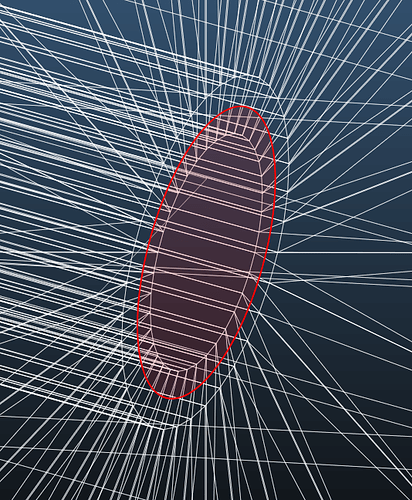Hello there,
I am working with Molflow v2.8.9 and am trying to model a gas valve injecting a gas puff into a vacuum test chamber. The main parts of the geometry are the gas fill chamber, the valve throat, and the test chamber. The setup is as follows.
The valve gas chamber fills up until the pressure inside reaches 11,000 mbar. Upon reaching this pressure, gas stops being injected and the ‘valve’ opens (A facet which opacity gets set to 0 at the exact moment the desired pressure is reached.). The valve stays open for 0.0015 seconds and then closes. The gas travels down the throat and is injected into the large vacuum chamber. The simulation stops at 0.1 seconds.
I have 3 ‘probe’ facets that track the pressure, one in the valve gas chamber, one the length of the valve throat, and one just inside the vacuum chamber.
The problem I am having is that the pressure in the valve gas chamber builds up to the desired pressure (the red dots), but as the valve opens and gas starts to travel down the throat (the blue dots), the pressure in the gas chamber stays constant. One would expect the pressure to start rapidly dropping during the time the valve is open but that behavior is not seen in the plots (attached below).
I feel like I might be setting up the problem incorrectly but I’m not sure. I’ll be including the .zip as well so it can be looked at.
Valve_analysis_with_gate.zip (2.9 MB)
Thanks for the help,
Skyler







